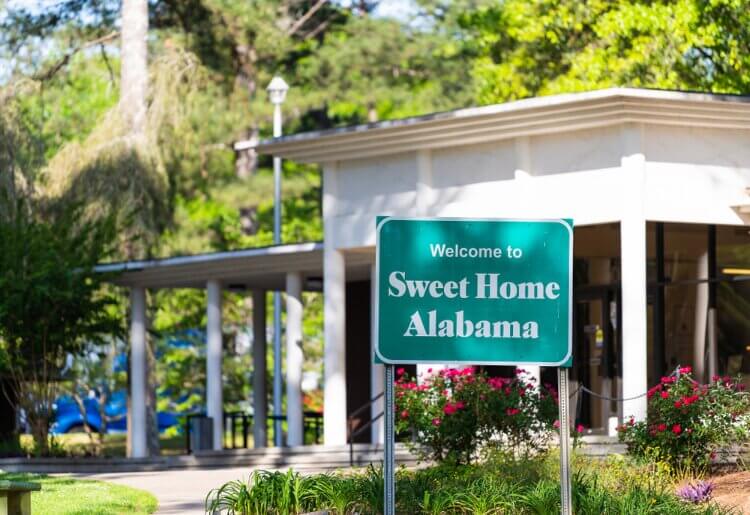A state's affordability depends on various factors, including population density, home values, safety/crime rates, local taxes, average income, and geography. Even the moving company you choose can impact the overall cost-effectiveness of your relocation.
If you want to find a life of comfort without sacrificing financial freedom, you need to understand the differences between the 10 most affordable states. In this post, I'll cover each state's pros and cons to give you well-rounded insight and help you find your dream destination.
» On a tight moving budget? Try Native Van Lines or AmeriSafe Moving for affordable prices.
Affordability Factors
When contemplating a move to a more affordable state, look beyond just housing costs or rent. Several key factors play a role in determining a location's overall affordability and quality of life. Here's a breakdown of what to consider:
- Housing costs: Ownership and rental costs vary widely across the US, with higher prices in tourist areas due to short-term rental demand. In big cities and areas with lots of people, leasing fees are usually higher than in remote or rural areas of the same state.
- Cost of living index: A theoretical price index (set to a base value of 100) that measures the relative cost of living over time or regions. It's typically calculated by gathering data on common costs associated with everyday living, such as housing, food, utilities, transportation, and healthcare.
- Income and employment: Well-paying jobs attract residents, affecting living costs. However, some Midwestern and Southeastern cities often offer a balance of job prospects and affordable living.
- State taxes: Research state tax structures, including income, property, and sales taxes, to understand their impact on affordability. You can find the 2024 tax range according to each state on tax-rates.org.
- Healthcare costs: Assess the average cost of healthcare insurance, which varies by state, especially if you have a family or significant health issues.
- Safety and crime rates: Higher crime rates often align with lower living costs. Consider safer, less densely populated areas like rural or suburban neighborhoods for affordable and secure living.
- Public services and infrastructure: Efficient public transportation and well-maintained infrastructure can save money by reducing the need for a personal vehicle. Facilities for pets can also help make life easier when out and about with your animals.
- Up-and-coming affordable states: Watch for states like Oklahoma and Idaho, which are gaining popularity for their low cost of living and affordable housing, even near urban centers. Also, keep an eye out for unique programs that offer financial incentives to encourage remote professionals to relocate there.
» Thinking of leasing a property? Look for these clauses in your rental contract.

The 10 Most Affordable States at a Glance:
1. Mississippi

Mississippi is known as the most affordable state in the US, with its cost of living index at 85.30—15% below the national average. It's a community-oriented state with more than 50 colleges and universities, including notable ones like the University of Mississippi and Jackson State University.
It may not be as glamorous as other states, but Mississippi offers benefits like less traffic, clean air, and affordable housing. The median household income here, as reported by the World Populations Review, is around $48,700. You also can find median home values at about $271,200, and the average yearly cost for childcare is nearly $5,440.
Pros
- Low transportation costs
- Mild climate, ideal for those who enjoy warmer weather
- Strong sense of community and a laid-back lifestyle
Cons
- Economic challenges
- High crime rate
2. Oklahoma
Oklahoma is notable for its diverse landscapes and natural beauty, which adds to its appeal beyond just being affordable. Housing plays a big part in its cost-effectiveness, with the median home value at $253,200. Additionally, childcare costs in Oklahoma average around $7,500 a year.
With lower prices for everyday needs and a median household income of about $55,800, Oklahoma is a financially viable option for many. The state's low income tax—between 0.25% and 4.75%—makes it even more affordable. Oklahoma also offers a solid job market in various industries, including logistics, healthcare, and finance.
Pros
- Homes priced below the national average
- Low living expenses
- Rich Native American heritage
Cons
- Unpredictable extreme weather
- Infrastructure budgeting issues
3. Alabama

In Alabama, the median household income is $53,900. The median house price in the state is $284,900, and childcare costs about $7,200 annually per child. Beyond these numbers, Alabama is known for its classic "Southern hospitality," with residents valuing courteous manners and warm community connections.
The state also boasts various local attractions, like The Gallery on Railroad in Historic Downtown Opelika, offering a unique mix of fine and decorative art. Additionally, it hosts numerous music, food, and cultural festivals throughout the year.
Pros
- High number of accredited public universities
- Unemployment rates are low
- Access to beaches
Cons
- Summers can be extremely hot
- Some dry counties with restricted alcohol consumption and purchases
4. Kansas
Kansas' median household income stands at around $64,000, with the median home price at about $276,300. Childcare parallels national rates at approximately $8,700 annually for infants. In addition, Kansas has a cost of living index of 87.7%, marking it as an affordable location.
The state is also famous for its friendly Midwestern cities, vast prairies and plains, and world-class aircraft manufacturing and biosciences hubs.
Pros
- Low-cost housing
- Affordable living expenses
- Rich history
Cons
- Not the prettiest state
- The weather can be a challenge
5 . Georgia

In Georgia, the median household income is around $66,500, with the average median home price statewide at about $375,300. Childcare also typically costs around $7,600 annually.
But the Peach State isn't just about numbers; it boasts a thriving arts scene, a renowned musical heritage, family attractions like Six Flags Over Georgia, and natural beauty ranging from mountains to beaches. Additionally, local governments receive specialized support and resources for quality community development.
Pros
- Excellent higher education institutions
- Four distinct seasons
- #1 US film production hub with unique behind-the-scenes tours
Cons
- High crime rates
- Limited public transportation
6. Tennessee
Tennessee's median household income nearly matches Missouri's at $59,600, with the median home price around $377,200. The state captivates both residents and visitors with its postcard-worthy natural beauty, from the towering Blue Ridge Mountains to the coastal plains. It's an outdoor enthusiast's paradise filled with awe-inspiring vistas.
Tennessee is also famous for its vibrant music scene. The Grand Ole Opry showcases both new and established country music artists. Additionally, the state is gearing up for a tourism boost, with several new attractions, restaurants, distilleries, hotels, and exhibits planned for 2024.
Pros
- Reduced cost of living
- Friendly people
- Low crime rates
Cons
- Cold and snowy winters
- Lack of diversity
7. Missouri
Missouri's median household income hit around $61,800 in 2023, with the average home price at approximately $255,400. Childcare costs hover around $7,000 annually, and the state boasts a low cost of living index of 88.4.
Additionally, Missouri is brimming with natural wonders, from breathtaking underground caverns to the birthplace of rock 'n roll. It borders other affordable states like Iowa, Tennessee, Arkansas, and Oklahoma, making it a suitable option for those looking between the Midwest and the South.
Pros
- Affordable public transportation
- Cost of living is lower than average
- Numerous free outdoor activities
Cons
- High crime rates
- Subpar healthcare system
8. Arkansas

Arkansas, or “The Natural State,” is a hidden gem with a population of over 3 million. Its diverse geography spans from the Ozarks to the Ouachita Mountains. And with a median home price of $259,000, it's an affordable choice for many.
Arkansas also doesn't skimp on natural beauty or recreational activities. It features over 600,000 acres of natural lakes and the only active diamond mine in the US. Plus, with seven national and 52 state parks, it offers stunning views and a range of outdoor activities.
Pros
- Has over 40 colleges and universities
- Extensive transportation networks
- Low cost of living
Cons
- Prone to severe thunderstorms
- Limited job opportunities
9. Indiana
Indiana's median household income stands at $62,700, and the average home price is about $258,000. With childcare costs around $9,500 annually, the state strikes an appealing balance between affordability, lifestyle offerings, and Midwestern hospitality.
It's also celebrated for its rich cultural heritage. The historic Kerns Bakery building, now transformed into Kerns Food Hall, buzzes with culinary delights from local chefs. Additionally, Indiana hosts various music, food, and cultural festivals, like the Feast of Lanterns, the GermanFest, and Indy Pride.
Pros
- Traffic is relatively light
- Excellent higher education institutions
- Unemployment rate is about half the national average
Cons
- Susceptible to natural disasters
- Limited public transportation
10. Iowa

Iowa boasts a healthy median household income of $65,600 and an average home price of $230,600, with annual infant childcare at around $9,300. The state is known for its excellent infrastructure, healthcare access, abundant opportunities, and top-tier education.
The state's natural beauty is another highlight. Attractions such as the stunning 200-foot-tall Dunnings Springs waterfall are just minutes from downtown Decorah. Additionally, it hosts the Iowa State Fair, one of the largest state fairs in the US.
Pros
- No toll charges on roads
- Low crime rates
- Excellent universities
Cons
- Cold and snowy winters
- Lack of diversity
Let Moving Companies Help You Save Money
When planning a relocation, you need to know what moving companies will and won’t transport. Most handle furniture but often won't move plants or hazardous materials.
Also, check if your chosen moving company is legit. Look for licensing information, read online reviews, and verify their status with the Better Business Bureau.
If you're downsizing or can't move everything at once, consider moving companies that offer storage options. This can help you save space and money, especially for long-distance moves or when waiting for your new home. Colonial Van Lines provides both long and short-term storage.
To save money with a moving company, consider decluttering before relocating to reduce shipment weight. Packing your own boxes and scheduling your move during off-peak times can also lower costs.

Affordable Living: Where to Next?
Affordability isn't just about prices. It encompasses a variety of factors like population density, local taxes, safety, geography, and average income. Ultimately, your new home should be a place where you can start a new chapter with financial freedom and personal fulfillment.
Whether you're drawn to Mississippi's laid-back lifestyle, Oklahoma's diverse landscapes, or the cultural richness of Indiana, each state offers unique benefits. Weigh your options carefully, and you're sure to find a location that not only fits your budget but also feels like home.
» Relocating soon? Avoid these common moving mistakes with our expert tips.

